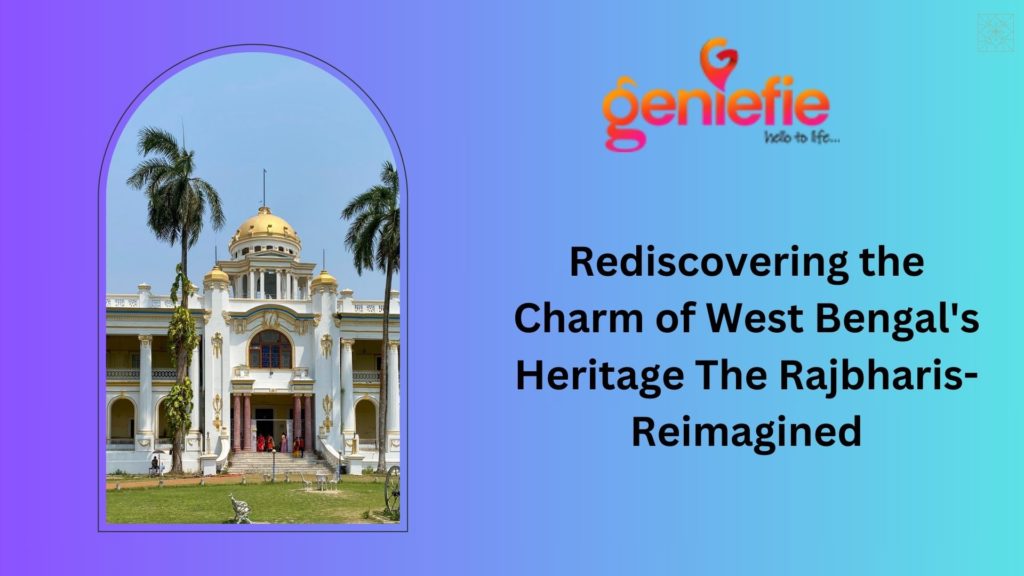Rajbaris – “King house”, or grand ancestral mansions, hold a significant place in the cultural heritage of West Bengal. These majestic structures are not just architectural marvels but also repositories of history and tradition. Their history is closely intertwined with Durga Puja, one of the most celebrated festivals in Bengal.
In the 18th and 19th centuries, during the era of Zamindars (landlords), many affluent families in Bengal built these opulent mansions. These Rajbaris served as the focal points for socio-cultural gatherings, and Durga Puja emerged as a central event. The Zamindars, as patrons of art and culture, spared no expense in adorning the Rajbaris with intricate artwork and sculptures, creating awe-inspiring pandals for the puja.
Over the years, Durga Puja in these Rajbaris became not just a religious festival but a grand cultural extravaganza. The puja pandals were transformed into showcases of artistic excellence, often with elaborate themes depicting mythology, social issues, or historical events. The idols of Goddess Durga were crafted with impeccable precision, reflecting the devotion and artistic finesse of the artisans.
Today, many Rajbaris have opened their doors to the public, welcoming them to witness the grandeur of Durga Puja and the rich cultural heritage of Bengal. These heritage structures have become integral to the festivities, offering a unique blend of tradition, artistry, and history during the festive season. Rajbaris, with their deep-rooted connection to Durga Puja, continue to stand as living witnesses to Bengal’s rich cultural tapestry.
Rajbaris in West Bengal: Where Tradition weaves history, heritage, and artistry
Shobhabazar Rajbari
A historical gem nestled in the heart of Kolkata, has a rich and captivating history that unfolds like a royal tapestry. This magnificent Rajbari, or mansion, traces its origins to the late 18th century, a time when Kolkata, then known as Calcutta, was the thriving capital of British India.
The Shobhabazar Rajbari was built by Raja Nabakrishna Deb, a prominent Bengali aristocrat and wealthy merchant during the 18th century. Construction of this grand edifice began in 1757, and it was completed in 1766. The Rajbari was conceived not only as a residence for the Deb family but also as a symbol of their opulence and prestige.
The architectural style of Shobhabazar Rajbari reflects a fusion of European and Indian influences, showcasing a blend of Neo-Classical and Indo-Saracenic elements. The mansion’s grandeur is evident in its impressive façade, intricately designed columns, and imposing entrance gate.
One of the most intriguing aspects of Shobhabazar Rajbari’s history is its association with Durga Puja. Raja Nabakrishna Deb is credited with starting the first organised Durga Puja celebration in Kolkata at his palace. This historic event laid the foundation for the grandeur and cultural significance that Durga Puja holds in Bengal today.
The Rajbari’s Durga Puja is marked by elaborate rituals, artistic decorations, and a sense of tradition that has been preserved for generations. It remains one of the most iconic and revered Durga Puja celebrations in Kolkata, attracting thousands of devotees and visitors each year.
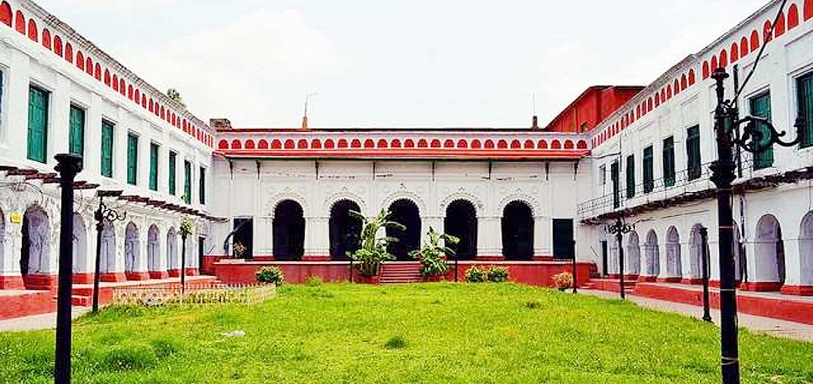
Bhukailash Rajbari
Bhukailash Rajbari with its fascinating history, has been an integral part of Kolkata’s cultural tapestry for over three centuries. This Rajbari, meaning a royal mansion, was the brainchild of Maharaja Joy Narayan Ghosal, and its legacy is deeply intertwined with the tradition of Durga Puja.
The roots of Bhukailash Rajbari can be traced back more than 300 years ago when Maharaja Joy Narayan Ghosal embarked on a remarkable journey. He initiated the Durga Puja celebration at this very mansion, and since then, it has been observed with unparalleled devotion and grandeur. This makes Bhukailash Rajbari’s Durga Puja one of the oldest and most revered in Kolkata.
The Rajbari, with its striking architectural beauty and historical significance, continues to be a focal point of the city’s Durga Puja festivities. The grandeur of the mansion, with its intricate designs and spacious courtyards, serves as a perfect backdrop for the elaborate rituals and artistic expressions that accompany the annual celebration.
Throughout the years, Bhukailash Rajbari has preserved and cherished the age-old traditions of Durga Puja while also embracing modern elements to keep the celebration relevant and engaging for today’s generation. It stands as a symbol of Kolkata’s rich cultural heritage and the enduring spirit of devotion that defines Durga Puja in the city.
In essence, Bhukailash Rajbari’s history is a testament to the timeless legacy of Durga Puja in Kolkata, where tradition and innovation harmoniously coexist, and where the spirit of devotion continues to thrive for centuries.
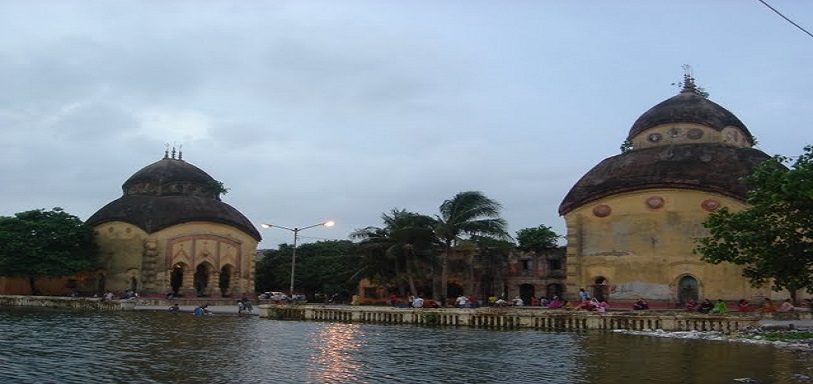
Sabarna Roy Choudhury Rajbari
The Sabarna Roy Choudhury Rajbari is steeped in history and is synonymous with the illustrious Sabarna Roy Choudhury family, who have been diligently observing Durga Puja for over 413 years at their ancestral residence in Barisha, Kolkata.
The roots of this grand celebration trace back to the 16th century when Lakshmikanta Roy Choudhury, a prominent ancestor of the Sabarna Roy Choudhury family, initiated the Durga Puja festivities. Since then, it has become an integral part of their family’s tradition, marked by deep devotion and cultural significance.
The Barisha Rajbari, where the puja takes place, holds a special place in the heart of Kolkata’s history. The sprawling mansion, with its distinctive architecture and lush gardens, provides a captivating backdrop for the puja. Over the centuries, the Sabarna Roy Choudhury family has maintained the essence of tradition while adapting to contemporary elements, ensuring that their Durga Puja remains a cultural masterpiece.
The Sabarna Roy Choudhury Rajbari’s Durga Puja stands as a living testimony to Kolkata’s rich heritage, where devotion and ancestral pride come together in harmony. Their commitment to upholding this centuries-old tradition reflects the unwavering spirit of Durga Puja in Kolkata, making it not just a festival but a cultural legacy that continues to thrive for generations.
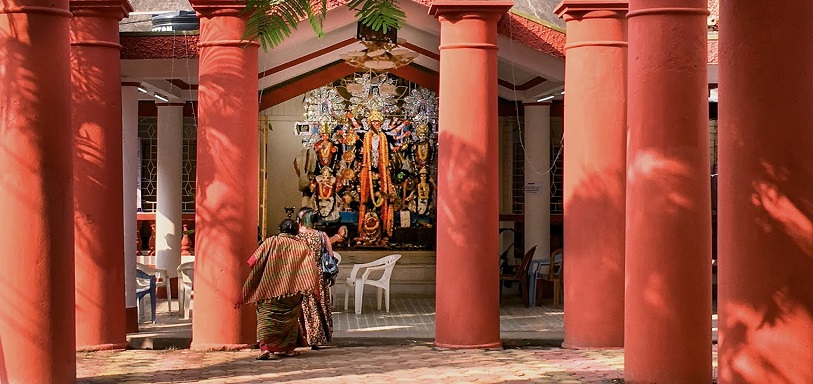
Bari Kothi Heritage
Bari Kothi Heritage, located in West Bengal, has a rich history that dates back to the colonial era. Originally built as a grand mansion by the wealthy Zamindars (landlords) of Azimganj in the 18th century, this architectural gem showcases the opulence and cultural heritage of the region.
Over the years, Bari Kothi has been meticulously restored and transformed into a luxurious resort, preserving its historical charm while offering modern amenities. When you visit Bari Kothi Heritage, you step into a world where the past meets the present. The resort’s elegantly decorated rooms, lush gardens, and antique furnishings transport you to a bygone era.
Guests have the opportunity to immerse themselves in the rich culture of West Bengal through traditional cuisine, music, and dance performances. Bari Kothi also offers guided tours to nearby historical sites and temples, allowing you to explore the region’s heritage.
Staying at Bari Kothi Heritage is not just a vacation; it’s a cultural journey through the heart of West Bengal, making it an unforgettable and enriching experience.
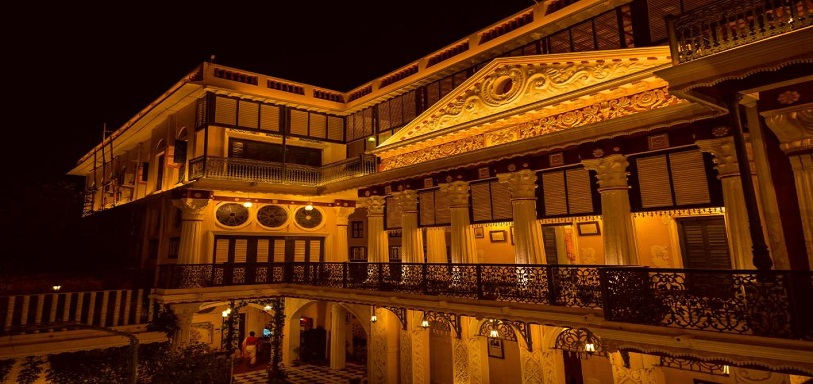
Amadpur Rajbari
Amadpur Rajbari, a historical treasure nestled in West Bengal, has a captivating history that dates back to the 18th century. Originally built by the Zamindars (landlords) of Amadpur, this majestic palace stands as a testament to the region’s opulent past.
Today, Amadpur Rajbari has been lovingly restored and transformed into a charming resort, allowing visitors to immerse themselves in the rich culture of West Bengal. As you step inside, you’ll be transported to a world of regal splendour and bygone grandeur. The resort offers well-appointed rooms, lush gardens, and a serene atmosphere that encourages relaxation and reflection.
Amadpur Rajbari provides a unique opportunity to not only enjoy a comfortable stay but also to connect with the cultural heritage of this region.
Visiting Amadpur Rajbari is an unforgettable journey through time and culture, making it a must-visit destination for travellers seeking an authentic West Bengal experience.
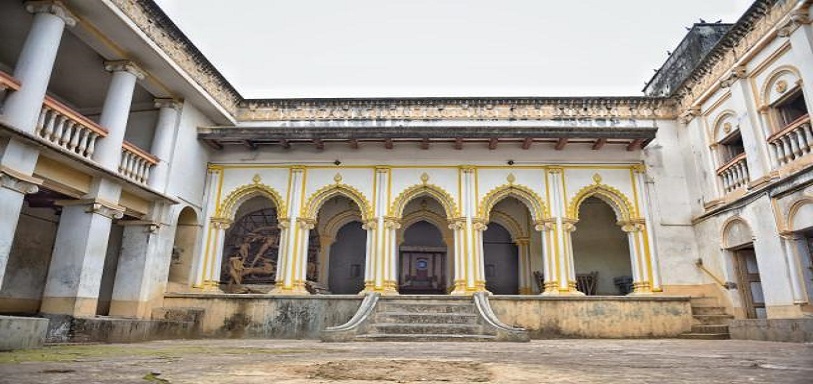
Belgadia Palace
Belgadia Palace, steeped in history and charm, is a magnificent testament to the cultural heritage of West Bengal. This elegant palace, dating back to the 18th century, was originally the residence of the royal Mayurbhanj family. Nestled amidst lush greenery in Odisha, near the West Bengal border, Belgadia Palace is a captivating blend of colonial and Odia architecture.
Today, Belgadia Palace has been lovingly converted into a luxurious heritage resort, inviting travellers to experience the rich tapestry of West Bengal’s culture. The palace boasts well-appointed rooms, antique furnishings, and exquisite gardens that transport guests to a bygone era of regal opulence.
A stay at Belgadia Palace offers more than just comfort; it’s a cultural immersion. Guests can savour traditional Bengali and Odia cuisine, witness folk performances, and explore the neighbouring tribal villages and temples, gaining insights into the region’s diverse heritage.
Belgadia Palace is not just a resort; it’s a portal to West Bengal’s cultural treasures, offering a unique opportunity to connect with its rich history and traditions, making your visit a truly unforgettable experience.
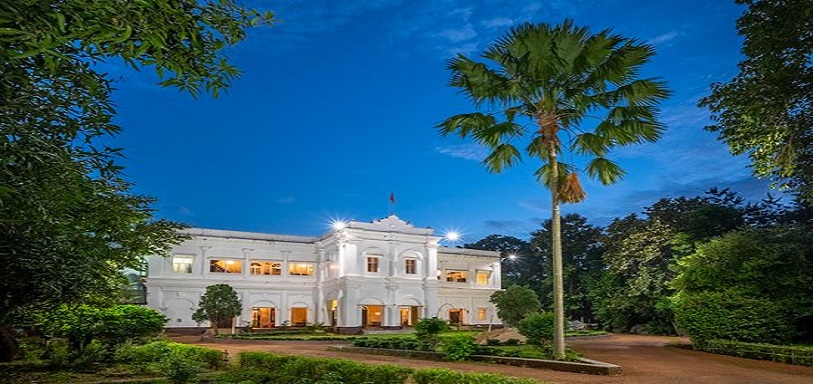
Jhargram Palace
The Jhargram Palace, a majestic architectural marvel, stands as a living testament to the cultural heritage of West Bengal. This splendid palace, with its origins dating back to the late 19th century, was once the residence of the Malla Deb royal family of Jhargram. Nestled amidst lush forests and serene landscapes in the West Midnapore district, this palace is a symbol of grandeur and history.
Today, the Jhargram Palace has been thoughtfully converted into a delightful heritage resort, offering travellers a unique opportunity to immerse themselves in the rich culture of West Bengal. The palace offers elegantly furnished rooms, sprawling gardens, and a tranquil ambiance that transports guests to a bygone era of regal opulence.
The Jhargram Palace provides a gateway to the heart of West Bengal’s cultural diversity, making it an enchanting destination for those seeking an authentic experience.
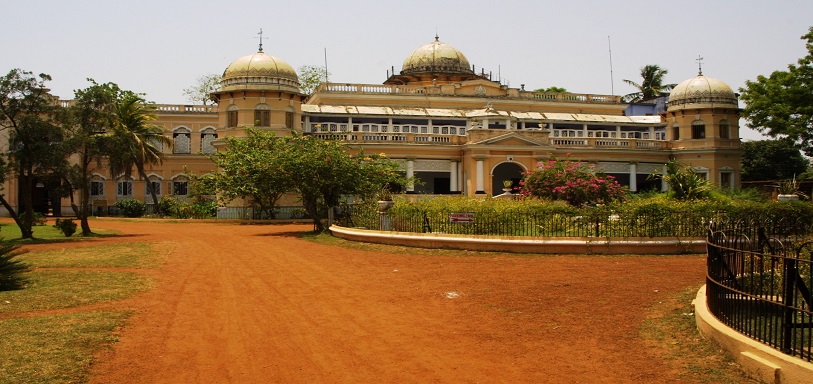
Mahishadal Rajbari
Mahishadal Rajbari, steeped in history and architectural splendour, is a remarkable testament to the cultural heritage of West Bengal. This opulent palace, originating in the 18th century, was once the residence of the aristocratic Ghosal family. Located in the serene town of Mahishadal, in the Purba Medinipur district, the palace exudes regal charm.
Today, Mahishadal Rajbari has been lovingly transformed into a delightful heritage resort, inviting visitors to immerse themselves in the rich culture of West Bengal. The palace offers well-appointed rooms, exquisite gardens, and a tranquil atmosphere that transports guests to a bygone era of grandeur.
During your stay at Mahishadal Rajbari, you can savour traditional Bengali cuisine, witness folk performances, and explore nearby historical sites and temples. The palace provides a unique opportunity to connect with the cultural tapestry of West Bengal, offering an enriching and authentic experience for travellers seeking a taste of its heritage. Visiting Mahishadal Rajbari is like stepping into a living museum of West Bengal’s cultural richness.
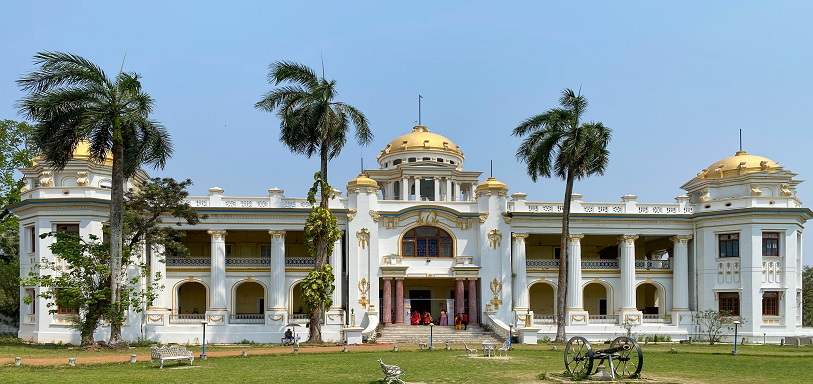
Embark on a journey through time in West Bengal’s resplendent Rajbaris, now enchanting resorts. Discover hidden gems like Mahishadal Rajbari, Jhargram Palace, Belgadia Palace, Amadpur Rajbari, and Bari Kothi Heritage, offering not just luxury but a glimpse into the state’s rich culture.
These palatial retreats whisper tales of the past in every corridor. Savor traditional Bengali cuisine, from sweets like rasgulla to spicy delights like macher jhol. Experience vibrant folk performances, explore historic sites, and let these Rajbharis be your portal to a bygone era where the culture and traditions of West Bengal come alive.
For a seamless journey, use the Geniefie Trip Planner app to create personalized itineraries when visiting West Bengal. Make the most of your adventure, one unforgettable moment at a time.

